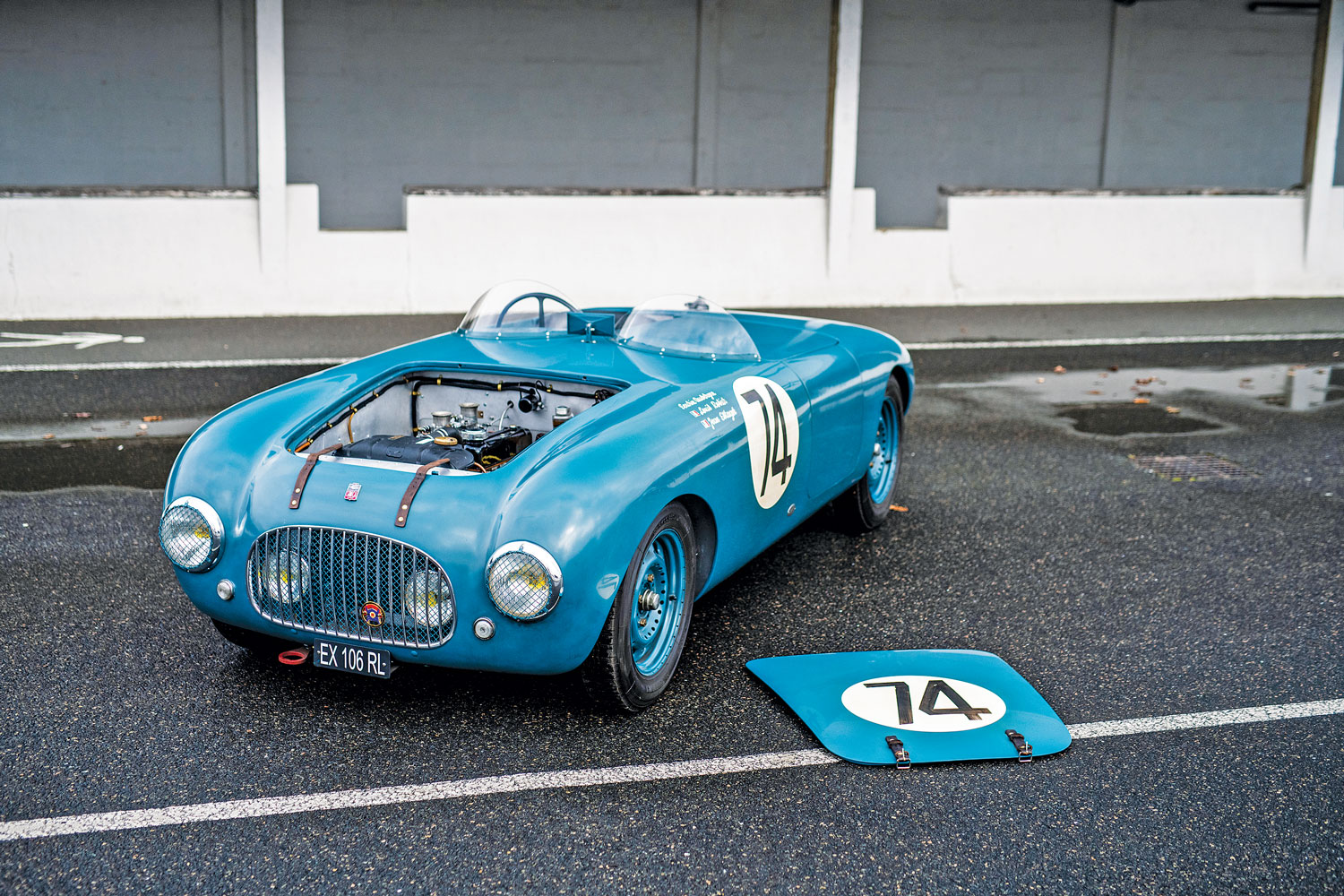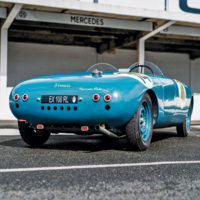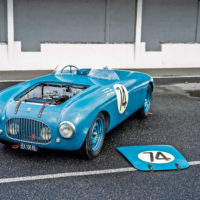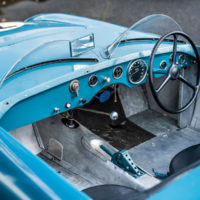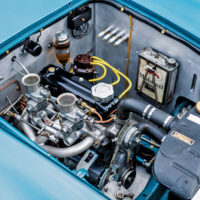SCM Analysis
Detailing
| Vehicle: | 1950 Simca Estager |
| Years Produced: | 1950 |
| Number Produced: | 1 |
| Club Info: | Sportscar Vintage Racing Association |
| Website: | http://www.svra.com |
| Alternatives: | 1950 Cisitalia 202, 1953 Moretti 750, 1951 Cooper T 39 “Bobtail” |
This car, Lot 118, sold for $201,201 (€166,750), including buyer’s premium, at Bonhams’ Monaco auction on April 23, 2021.
The essence of today’s profile is simple: How do you pronounce “Etceterini” in French?
For those of you unaccustomed to the original usage of the term, Etceterini refers to the myriad specialty producers that existed in Italy during the late 1940s and ’50s, building one-offs and tiny quantities of sporting cars. These ranged from almost-real manufacturers, such as Cisitalia, to the truly obscure garage shops like Giaur, Ermini and Urania. Their cars tended to be as small as their production numbers, and many were individualistic to the point of being weird.
For the most part, the cars used 750-cc and 1,100-cc engines. Only a few companies were ambitious and well-funded enough to build their own motors, not to mention transmissions and suspensions. Fortunately, the Italians had Fiat. The biggest auto manufacturer in Italy by far, it had a broad range of cars in production, which in turn meant that the wrecking yards had lots of available bits.
In 1937, Fiat had introduced a new small family sedan called the Fiat 508C (also named Balilla 1100). It was a technological marvel for the market segment, featuring independent front suspension, a pushrod overhead-valve 4-cylinder engine with an aluminum cylinder head, and a 4-speed transmission with synchromesh on third and fourth gears. It later became simply the “Fiat 1100,” with continuing improvements throughout its production, which lasted into the early 1950s. Lots of them were built, so parts were everywhere and they were cheap, thus forming the mechanical core of many Etceterini.
The French version
You may wonder what this all has to do with a French car, and the answer is simple enough: Simca was Fiat France, founded in 1934 to avoid protectionist tariffs. The Simca Eight that formed the basis for this racing special was a French-produced Fiat 1100.
Likewise, Roger Deho was cut from the same cloth as Italians such as Carlo Abarth or Attilio Giannini, all competent racers who formed companies to support themselves building the cars they loved. Deho’s name can be found among the mid-pack finishers of French Grand Prix races in the late 1940s, driving a Maserati 6CM.
His day job was building racers out of Simca Eights, although his primary business was probably selling hot-rod bits to do-it-yourselfers. He was actually big enough to cast aluminum components of his own design, such as oil pans, shock absorbers and brake drums. He was also able to coax about 60 horsepower out of the 1,100-cc Simca engine, compared to just 30 in stock tune. It is unclear how many complete cars Deho managed to build between the end of the war and his death from lung cancer in 1951. At least four and possibly as many as 10 race cars left his shop.
Jean Estager apparently approached Deho for the chassis of our subject car, then had it bodied by Carrozzeria Motto in Turin in mid-1950. There is no evidence that Estager raced it, yet it was entered (but didn’t start) in the 1951 Le Mans race and definitely ran at Montlhéry that year. So its racing pedigree is real, if short.
Valuations and expectations
Pretty much by definition, Etceterini are eclectic cars, but they share a number of characteristics. They are small in size, with bespoke aluminum bodywork (which is huge in terms of collector value). They are sporting cars and most were raced, though more often in local events than big-noise international competitions. They are also hen’s-teeth rare, so if a builder made enough cars that anyone recognizes the marque, they tend to transcend the genre — OSCA, Cisitalia and Abarth come to mind.
In terms of value, these cars tend to range from about $150k on up, depending on how fast they are, how cute they are, and whether they qualify for the Mille Miglia Storica. Only cars of which an example actually competed in the original Mille are accepted, but quite a few Etceterini actually did. “On up” can be way up, as 8V Siatas can easily hit $1.5m, but these are 2-liter V8s, not 1,100-cc I4s.
Our subject car didn’t do that much racing, at best a few French events, and as a result sits on the low side of the value range, with a limited market. Even though it did not start, the fact that it was entered in the 1951 Le Mans (and is French) may qualify it for an Historic Le Mans acceptance, and if that is the intent the investment will have been astute. Entry into that event is limited and desirable, and generally the province of much more expensive cars.
The seller was clearly a Francophile collector, and the car most likely went to a similar new home. I am sure that it is a lot of fun to drive, as 60 hp in an 1,100-pound car isn’t exactly slow. On its skinny, hard tires I expect it is a joy to fling around corners, but the odds are that it will spend its life on display in a line of French blue cars. Either as a display or as a racing toy, this was fairly bought. ♦
(Introductory description courtesy of Bonhams.)
